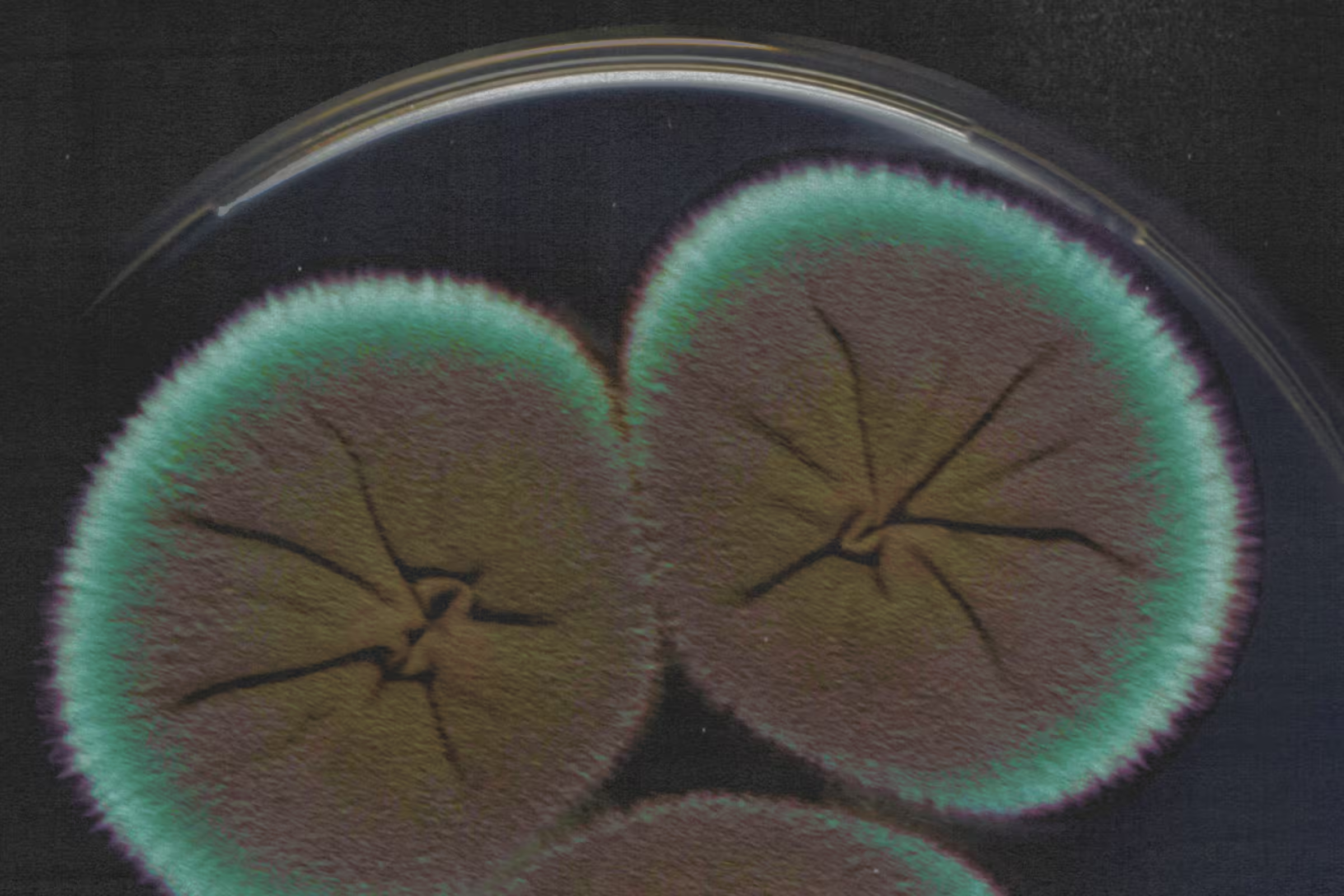

Fact Check: Can IUDs Cause Infertility?
Learn how copper and hormonal IUDs work, what the research says about future fertility, and what might impact your ability to conceive after removal.
Words by Olivia Cassano
Scientifically edited by Dr. Krystal Thomas-White, PhD
Medically reviewed by Dr. Kate McLean MD, MPH, FACOG
If you're using an intrauterine device (IUD), or considering one, you might have wondered if it can affect your ability to have kids later on.
It's a totally valid question, especially when you're thinking long-term about your fertility. Over the years, birth control has been surrounded by fearmongering and myths — one of the most persistent being that it can somehow “mess up” your fertility. While these concerns are understandable, especially when it comes to something as personal as your reproductive future, the science tells a much more reassuring story.
Let’s break it all down: how IUDs work, what the science says about fertility after removal, and other possible reasons you might have trouble conceiving down the road.
How do IUDs work?
The IUD is a form of long-acting reversible contraception (LARC). There are two main types of IUDs: copper and hormonal. Both are small, T-shaped devices that are placed in your uterus by a healthcare provider. While they serve the same goal (preventing pregnancy), they do so in different ways.
Copper IUD
The copper IUD (Paragard) is hormone-free. Instead, it uses copper's natural ability to interfere with sperm movement. Copper ions are toxic to sperm, so they can't swim effectively or reach an egg. If sperm can’t reach the egg, fertilization doesn’t happen.
The copper IUD can stay in place for up to 10 years, and in some cases, even up to 12 years, depending on your provider’s recommendation. It’s one of the longest-lasting forms of reversible birth control available.
Hormonal IUD
Hormonal IUDs (Mirena, Kyleena, Liletta, Skyla) release levonorgestrel, a type of progestin. This hormone thickens your cervical mucus, making it much harder for sperm to get through. It also thins the uterine lining, which helps prevent implantation if fertilization does occur. In some cases, hormonal IUDs can also suppress ovulation, although that’s not their primary mechanism.
Hormonal IUDs can last anywhere between three and eight years, depending on the brand. Your provider can help you choose the option that’s best for your needs and timeline.
Can IUDs cause infertility?
Now, here’s the good news: No, IUDs do not impair long-term fertility. This has been supported by several well-respected studies and medical organizations.
A prospective cohort study published in the American Journal of Obstetrics and Gynecology found no significant difference in the time it took to get pregnant between women who had used IUDs and those who hadn’t. In other words, using an IUD in the past didn’t make it any harder to conceive in the future.
A review in the Journal of Assisted Reproduction and Genetics looked specifically at the levonorgestrel-releasing IUD (the hormonal kind) and found mixed evidence that it causes infertility, despite some concerns about changes in the uterine lining. While 70–75% of women can get pregnant within a year after removing the LNG-IUD, the review also suggests that the rate of infertility after removing the IUD may be double the general infertility rate of 15%. Studies on fertility after IUD removal often don't focus enough on women who have never given birth or those who have used the LNG-IUD for a long time, which doesn't reflect the growing number of patients in this situation.
The only way that IUDs can affect your fertility is if you have one, but once it’s removed, your fertility will go back to normal.
What about the risk of pelvic inflammatory disease?
Pelvic inflammatory disease (PID) is a serious infection that can damage your reproductive organs and affect fertility. While it has been historically linked to IUD use, more recent studies have shown that this risk is very low, particularly when you're screened for sexually transmitted infections (STIs) before IUD insertion. PID risk is highest within the first 20 days after getting an IUD inserted, but after that, it's extremely rare.
The New England Journal of Medicine emphasized that PID is rare in IUD users, especially if there's no history of untreated STIs. So, unless you have a history of chlamydia, gonorrhea, or other STIs, your risk of developing PID from an IUD is minimal.

Recurrent symptoms? Get Evvy's at-home vaginal microbiome test, designed by leading OB-GYNs.
Can an IUD damage the uterus?
There are very rare cases in the medical literature linking IUDs to complications like uterine synechiae (also known as Asherman syndrome), where scar tissue forms in the uterus. This was reported in a small case series involving hormonal IUDs, particularly among women who had never been pregnant before. But these cases are extremely limited, and the evidence is not strong enough to suggest that IUDs commonly cause this issue.
Another common worry is uterine perforation, a rare but serious complication that can occur when an IUD is inserted. The risk is very low — about one to two cases per 1,000 insertions, or roughly 0.1% to 0.2%. When perforation does happen, it typically occurs at the time of insertion, meaning the IUD or the inserter accidentally passes through the wall of the uterus.
Certain factors may slightly increase the risk, such as being postpartum or breastfeeding, because the uterine wall may be softer or thinner during that time. Some cases of perforation don’t cause immediate symptoms, but others may present as severe pain during or after insertion, persistent cramping, unusual bleeding, or difficulty locating the IUD strings. If a perforation is suspected, imaging is used to confirm the IUD’s placement, and removal (often via laparoscopy) may be necessary.
The reassuring news is that uterine perforation is very rare, and even when it does occur, it rarely causes long-term health issues or impacts fertility. With skilled providers performing the insertion, the chances of this happening are very low. If you ever feel like something isn’t right after an IUD insertion, it’s always a good idea to check in with your healthcare provider.
Ectopic pregnancies and IUDs
One concern that often comes up when discussing IUDs and infertility is the risk of ectopic pregnancy, when a fertilized egg implants somewhere outside the uterus, most commonly in the fallopian tube. It’s a serious medical condition that requires prompt treatment and, understandably, can raise fears about future fertility.
Here’s an important point to keep in mind: IUDs are really effective at preventing pregnancy, both inside the uterus and outside (like ectopic pregnancies). They’re among the best options for reversible birth control methods.
Now, if a pregnancy does happen while using an IUD (which is quite rare), it might be more likely to be ectopic compared to those who aren't using any birth control. This doesn't mean the IUD causes ectopic pregnancies. Rather, it's because if a pregnancy occurs, the IUD might make it harder for the embryo to implant in the uterus, which can sometimes lead it to implant in the fallopian tube instead.
But don’t worry — the overall risk of having an ectopic pregnancy with an IUD is very low, even lower than for women not using any contraception. A study in JAMA showed that using a certain type of hormonal IUD might slightly raise the risk of ectopic pregnancy compared to other hormonal methods. However, since IUDs are so good at preventing pregnancy, the likelihood of an ectopic pregnancy remains quite low. In other words, while there’s a slightly higher chance that a pregnancy might be ectopic with an IUD, the chance of getting pregnant at all is much lower, which significantly reduces the overall risk.
If you ever think you might be pregnant with an IUD — especially if you feel any unusual pain or have irregular bleeding — don't hesitate to reach out to your healthcare provider. They’re there to help ensure everything’s okay and can guide you on what to do next.
So, to sum it up: while there is a small risk of ectopic pregnancy with IUDs, they still provide excellent protection against getting pregnant, and using an IUD actually lowers your risk of ectopic pregnancy compared to not using any contraception at all.
How long does it take to get pregnant after IUD removal?
In most cases, fertility returns quickly after IUD removal, often within the first menstrual cycle. Some women even get pregnant the same month their IUD is taken out.
Whether you're using a copper or hormonal IUD, neither delays your return to fertility. The hormone in levonorgestrel IUDs leaves your system relatively quickly, and ovulation resumes for most people soon after removal.
That said, everybody is different. For some, it might take a few months to regulate their cycle, especially if their periods were irregular before using the IUD.
Why is it hard to get pregnant after IUD removal?
If you’re having difficulty getting pregnant after your IUD is removed, it’s important to remember that it’s usually not the IUD’s fault. Several other factors could be influencing your fertility, including:
Age
As we get older, our fertility naturally declines, especially after age 35. If you had an IUD in for several years and are now trying to conceive later in life, age-related changes in egg quality and quantity could be at play.
Underlying conditions
Some people use hormonal IUDs not just for birth control, but to manage conditions like endometriosis or polycystic ovary syndrome (PCOS). These conditions can affect ovulation, the uterine lining, or overall hormonal balance, not because of the IUD, but because of the underlying health issues themselves.
So if you had an IUD to help manage heavy bleeding, irregular cycles, or chronic pelvic pain, and you're now having trouble conceiving, it may be worth revisiting those root causes with your doctor.
Lifestyle factors
Other common issues that can affect fertility include thyroid disorders, high levels of stress, weight fluctuations, excessive exercise, smoking, or exposure to environmental toxins. These factors can all play a role in how quickly you conceive.
When to see a healthcare provider
If you’ve had your IUD removed and have been trying to conceive for 12 months (or six months if you’re over 35) without success, it’s a good idea to consult a fertility specialist. They can help you identify any underlying causes and guide you through the next steps.
Also, if you used your IUD to manage a condition like PCOS or endometriosis, it’s worth checking in with your OB-GYN sooner to revisit your treatment plan and discuss fertility options.
FAQ
Can you become infertile after IUD?
No. IUDs (both copper and hormonal) don’t cause infertility. The vast majority of people regain their fertility quickly after removal, and research consistently shows no long-term impact on their ability to conceive. If you’re having trouble getting pregnant, it’s more likely due to other factors like age, pre-existing health conditions, or lifestyle, not the IUD itself. So if you're currently using an IUD and thinking about starting a family in the future, you can rest easy knowing that your birth control isn’t working against your fertility. And when the time comes, you’ll likely be ready to try soon after it’s removed.





.avif)